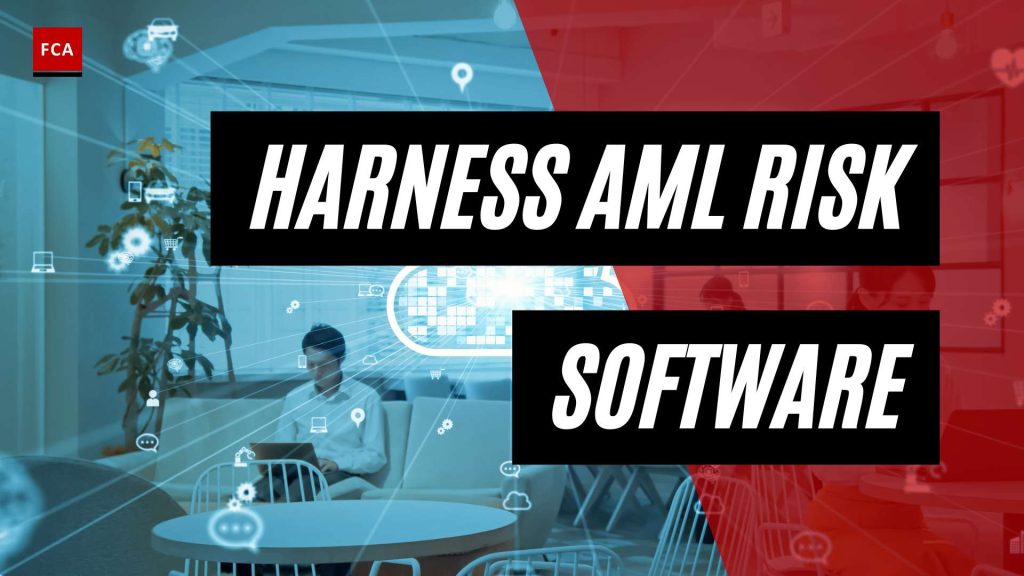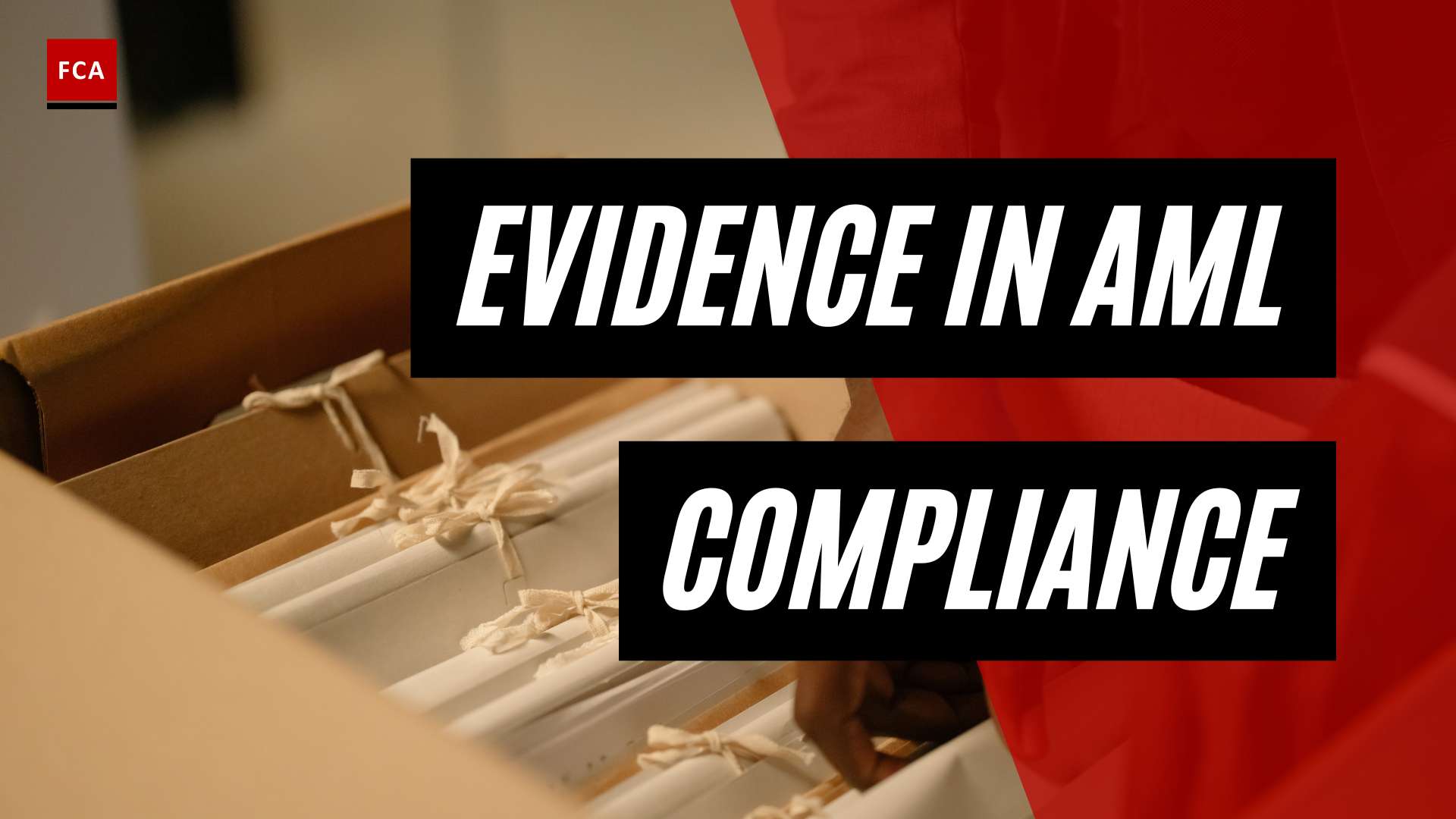Understanding AML Risk Assessment
To effectively combat money laundering and terrorist financing, organizations implement Anti-Money Laundering (AML) risk assessments. AML risk assessment is a crucial process for maintaining the integrity of the financial system and is mandated by regulations such as the Bank Secrecy Act (BSA) for financial institutions. It involves analyzing vulnerabilities and tailoring AML efforts accordingly.
AML Risk Assessment Overview
AML risk assessment is an essential component of a robust AML compliance program. It involves evaluating the risks associated with money laundering and terrorist financing activities. By identifying and understanding these risks, organizations can implement appropriate measures to prevent and detect illicit financial activities.
Importance of AML Risk Assessment
The importance of AML risk assessment cannot be overstated. It serves as the foundation for effective AML compliance efforts. AML risk assessments enable organizations to:
- Identify and evaluate the potential risks they face, such as customer profiles, transaction patterns, and geographic exposure.
- Tailor their AML programs to address specific risks effectively.
- Allocate resources efficiently by focusing on high-risk areas.
- Demonstrate compliance with regulatory requirements.
- Mitigate the risk of financial and reputational damage resulting from money laundering activities.
To ensure comprehensive and standardized assessments, many financial institutions utilize an AML risk assessment template. This template provides a structured framework for evaluating risks and helps organizations meet regulatory expectations. It ensures that critical elements of risk assessment are not overlooked and promotes internal collaboration.
AML Risk Assessment Framework
The framework of AML risk assessment plays a crucial role in identifying, assessing, and mitigating money laundering and terrorist financing risks. Financial institutions classify risk factors into different levels, ranging from Very Low to Very High. This classification provides insight into customer risk profiles, transaction patterns, and geographic exposure.
A structured AML Risk Assessment Methodology is used by financial institutions to manage risks associated with money laundering and terrorist financing. This methodology ensures effective risk recognition, evaluation, and mitigation in the evolving financial landscape. It contributes significantly to AML compliance efforts by providing a systematic approach to AML risk assessment.
By implementing a comprehensive AML risk assessment framework, organizations can better understand the risks they face and develop targeted strategies to mitigate those risks. This proactive approach strengthens their AML compliance programs and helps maintain the integrity of the financial system.
In the following sections, we will explore the components of AML risk assessment, the role of AML risk assessment software, the significance of artificial intelligence in AML risk assessment, and industry-specific considerations for AML risk assessment in financial institutions and the real estate sector.
Components of AML Risk Assessment
To effectively combat money laundering and terrorist financing, an AML risk assessment is a crucial component of an organization’s anti-money laundering compliance efforts. The risk assessment process involves evaluating and mitigating risks associated with these illicit activities. There are three key components of an AML risk assessment: customer risk assessment, transaction risk assessment, and geographic risk assessment.
Customer Risk Assessment
Customer risk assessment plays a pivotal role in identifying and managing the risks posed by individual customers. By assessing customer risk, financial institutions can determine the level of due diligence required and tailor their AML efforts accordingly. A risk model is often employed to calculate a risk score for each customer, categorizing them as high, medium, or low risk. This risk score provides valuable insights into the potential money laundering risks associated with customer relationships and activities within the institution.
Financial institutions must analyze various customer attributes and indicators to determine the level of risk. These may include factors such as the customer’s source of funds, the nature of their business activities, their geographic location, and their transaction patterns. By assessing these risk factors, institutions can effectively identify customers who may pose a higher risk of money laundering and implement appropriate measures to mitigate that risk.
Transaction Risk Assessment
Transaction risk assessment focuses on evaluating the risks associated with individual transactions. This assessment helps identify unusual or suspicious activities that may indicate potential money laundering or terrorist financing. Financial institutions must establish risk thresholds and monitoring mechanisms to trigger alerts when these thresholds are exceeded. By monitoring and analyzing transactional data, institutions can detect patterns and anomalies that require further investigation.
Transaction risk assessment involves examining key transaction details such as the size and frequency of transactions, the countries involved in the transactions, and the nature of the goods or services being transacted. Unusual transactional behavior, such as frequent large cash deposits or transfers to high-risk jurisdictions, may indicate potentially illicit activity. Implementing advanced analytical tools and technologies can enhance transaction monitoring capabilities and improve the effectiveness of risk assessment efforts (Finscan).
Geographic Risk Assessment
Geographic risk assessment focuses on evaluating the risks associated with specific geographic regions or jurisdictions. Different countries and regions may present varying levels of money laundering and terrorist financing risks due to factors such as weak regulatory frameworks, political instability, or high levels of organized crime. Financial institutions must assess the risks associated with their business operations and customer base in different geographic locations.
To conduct a geographic risk assessment, institutions analyze information such as the country’s regulatory environment, its inclusion in international watchlists, and its overall reputation concerning money laundering and terrorist financing. This assessment helps institutions determine the appropriate level of due diligence and risk mitigation measures required when dealing with customers and transactions related to high-risk jurisdictions.
By conducting comprehensive customer risk assessments, transaction risk assessments, and geographic risk assessments, financial institutions can effectively identify, evaluate, and mitigate the risks associated with money laundering and terrorist financing. These assessments form the foundation of an organization’s AML compliance framework, enabling them to implement appropriate preventive measures and contribute to the overall integrity of the financial system.
AML Risk Assessment Software
In the realm of Anti-Money Laundering (AML) compliance, utilizing effective AML risk assessment software is paramount for organizations to stay ahead of financial crime. This software automates, streamlines, and optimizes compliance tasks, helping businesses comply with required AML regulations. By managing regulatory compliance and detecting abnormal transactions, AML software plays a vital role in mitigating risks associated with money laundering activities (Unit21).
Benefits of AML Risk Assessment Software
Implementing AML risk assessment software offers several benefits for organizations in their AML compliance efforts. These benefits include:
-
Efficiency: AML software leverages artificial intelligence and data science to optimize AML operations and management, resulting in quicker and more accurate performance. This efficiency allows businesses to streamline their compliance processes and allocate resources more effectively.
-
Enhanced Compliance: AML software helps organizations verify customers, flag suspicious transactions and behavior, screen sanctions and politically exposed persons (PEP) lists, and mitigate false positives more efficiently than manual processes (Unit21). By automating these tasks, organizations can achieve a higher level of compliance and reduce the risk of regulatory breaches.
-
Risk Mitigation: AML risk assessment software is an integral part of a broader AML compliance framework, executed as part of a risk-based approach tailored to the specific requirements of a financial institution (Unit21). It helps trace and detect unusual activity involving valuable assets and individual transactions, enabling organizations to identify and mitigate potential risks associated with money laundering.
-
Operational Optimization: AML compliance software encompasses specific tools such as identity verification, transaction monitoring, case management, sanctions and PEP screening, risk assessment and management, suspicious activity reporting, investigation optimization, and alert scoring. These tools help organizations optimize their AML compliance operations, streamline processes, and enhance overall operational efficiency.
Key Features of AML Risk Assessment Software
AML risk assessment software is equipped with a range of key features that contribute to its effectiveness in combating financial crime. These features include:
-
Identity Verification: AML software enables organizations to verify the identity of their customers, ensuring compliance with Know Your Customer (KYC) requirements and reducing the risk of engaging in transactions with high-risk entities.
-
Transaction Monitoring: Through advanced algorithms and pattern recognition, AML software monitors transactions in real-time, flagging suspicious activities and potentially fraudulent behavior.
-
Sanctions and PEP Screening: AML risk assessment software screens individuals and entities against global sanctions lists and PEP databases, allowing organizations to identify and mitigate potential risks associated with money laundering.
-
Risk Assessment and Management: AML software facilitates the assessment and management of customer risk, transaction risk, and geographic risk, providing organizations with a comprehensive understanding of their AML risk exposure.
-
Suspicious Activity Reporting: AML software enables the generation of accurate and detailed suspicious activity reports, ensuring regulatory compliance and facilitating effective communication with relevant authorities.
Considerations for Choosing AML Risk Assessment Software
When selecting AML risk assessment software, organizations should consider several factors to ensure the software aligns with their specific needs. Some of these considerations include:
-
Compliance with Regulatory Requirements: The software should comply with the AML regulations applicable to the organization’s jurisdiction, providing the necessary functionalities to meet regulatory obligations.
-
Integration Capabilities: Seamless integration with existing systems, such as customer relationship management (CRM) and transactional databases, enables efficient data sharing and enhances the overall effectiveness of the AML program.
-
Scalability: The software should be scalable to accommodate the organization’s growth and evolving compliance requirements.
-
User-Friendly Interface: A user-friendly interface simplifies the implementation and daily usage of the software, ensuring that compliance teams can navigate the system efficiently.
-
Robust Reporting and Analytics: The software should provide comprehensive reporting capabilities, allowing organizations to generate meaningful insights and facilitate data-driven decision-making.
By carefully evaluating these considerations, organizations can choose the most suitable AML risk assessment software to strengthen their AML compliance efforts and mitigate the risks associated with financial crime.
Role of Artificial Intelligence in AML Risk Assessment
Artificial Intelligence (AI) has emerged as a game-changer in the field of Anti-Money Laundering (AML). By harnessing the power of AI and data science, financial institutions and organizations can significantly enhance their AML risk assessment processes. Let’s explore the role of AI in AML risk assessment, its advantages, and the future applications it holds.
AI and Data Science in AML Risk Assessment
AI algorithms, coupled with data science techniques, play a crucial role in AML risk assessment. By analyzing vast amounts of data in real-time, AI algorithms can identify patterns, anomalies, and potentially suspicious transactions more effectively than traditional manual methods. This enables financial institutions to detect and prevent money laundering activities more efficiently and accurately.
The continuous learning and adaptive capabilities of AI in AML are particularly valuable. AI algorithms can constantly evolve and adapt to new patterns and trends, enabling them to identify previously unknown risks and enhance the overall accuracy of AML programs. This sophisticated and automated approach helps in detecting and preventing financial crimes more effectively (Sanction Scanner).
Advantages of AI in AML Risk Assessment
The advantages of utilizing AI in AML risk assessment are numerous. By leveraging AI technology, financial institutions can improve the efficiency and effectiveness of their AML efforts. Some key advantages include:
-
Improved Efficiency: AI algorithms can analyze large volumes of data rapidly, allowing financial institutions to process and assess potential risks more efficiently. This helps to streamline AML operations and reduce processing times.
-
Enhanced Effectiveness: AI algorithms can identify suspicious patterns and anomalies that may be missed by traditional manual methods. This improves the accuracy of risk assessment and increases the likelihood of detecting and preventing money laundering activities.
-
Cost Reduction: By automating various AML processes, AI can significantly reduce costs associated with manual labor and resource allocation. This allows financial institutions to allocate their resources more effectively towards other critical tasks within their AML programs.
-
Resource Optimization: AI technology frees up human resources by automating repetitive and time-consuming tasks. This enables AML professionals to focus on more complex investigations and strategic decision-making.
Successful case studies have demonstrated the effectiveness of AI in AML efforts. These examples showcase how AI can enhance the accuracy and efficiency of AML processes, ultimately strengthening the detection and prevention of financial crimes (Sanction Scanner).
Future Applications of AI in AML Risk Assessment
The future of AI in AML holds promising advancements. As AI technology continues to evolve, its applications in AML risk assessment are expected to expand. Some potential future applications include:
-
Integration of Machine Learning: Machine learning algorithms can be integrated into AML systems to identify emerging money laundering risks by learning from historical data and evolving patterns.
-
Natural Language Processing: AI-powered natural language processing techniques can be utilized to understand and analyze complex financial documents, such as reports and legal documentation. This can help in identifying potential money laundering activities hidden within vast amounts of textual data.
-
Robotic Process Automation: Robotics and automation can be leveraged to automate manual AML tasks, such as data entry and document verification. This not only increases efficiency but also reduces the risk of human error.
As AI technology continues to advance, it will play an increasingly significant role in the fight against money laundering. The integration of AI in AML risk assessment holds the potential to revolutionize the way financial institutions identify, detect, and prevent financial crimes.
AML Risk Assessment in Specific Industries
AML risk assessment plays a crucial role in various industries, helping organizations identify and mitigate potential risks associated with money laundering and illicit financial activities. In this section, we will explore the importance of AML risk assessment in financial institutions and the real estate sector. Additionally, we will discuss regulatory guidance on AML risk assessment in relation to artificial intelligence (AI).
AML Risk Assessment in Financial Institutions
Financial institutions, such as banks, are at the forefront of combating money laundering and ensuring compliance with anti-money laundering regulations. Conducting thorough AML risk assessments is essential for these institutions to identify and assess the risks associated with their customers, transactions, and geographic locations.
By implementing AML risk assessment practices, financial institutions can:
- Identify high-risk customers and implement enhanced due diligence measures to mitigate potential risks.
- Monitor and analyze transactional data to detect and report suspicious activities, such as large cash transactions or patterns that indicate potential money laundering.
- Assess the inherent risks associated with different geographic locations, taking into account factors such as the presence of high-risk jurisdictions or politically exposed persons (PEPs).
AML risk assessment software plays a crucial role in enhancing the effectiveness and efficiency of risk assessment processes for financial institutions. It enables banks to save substantial amounts of money by reducing manual efforts in AML compliance processes and minimizing the risk of non-compliance fines, which can reach up to $1.25 million per violation in some cases. Integrated AML compliance management systems with risk assessment software assist banks in avoiding inadvertent violations of AML regulations, which can result in severe fines and reputational damage (Tookitaki).
AML Risk Assessment in Real Estate
The real estate sector has become increasingly vulnerable to money laundering and illicit financial activities. Large transactions in real estate make it an attractive avenue for money launderers. Consequently, regulations have been put in place to lower associated risks and ensure AML compliance.
In the real estate industry, AML risk assessment focuses on:
- Conducting due diligence on potential buyers, sellers, and other parties involved in property deals to verify their identities and assess the potential risks they may pose.
- Screening customer and transaction data against lists of known or suspected money launderers to identify any potential red flags.
- Complying with AML regulations, reporting suspicious activities to relevant authorities, and protecting the company from involvement in money laundering.
AML screening software plays a critical role in helping businesses in the real estate sector meet their AML compliance obligations. It saves time and resources by automating manual AML screening processes, making the process more efficient and cost-effective. By integrating AML screening software with existing real estate systems, businesses can better manage data, gain a holistic view of customers, transactions, and risks, and make more informed business decisions by identifying patterns and trends in their data (Sanction Scanner).
Regulatory Guidance on AML Risk Assessment and AI
The Financial Action Task Force (FATF) recognizes the potential of artificial intelligence (AI) and machine learning in AML compliance. Machine learning algorithms can help detect anomalies and outliers, refine compliance inputs, and improve data quality and analysis. AI has the potential to enhance AML risk assessment processes by leveraging data science techniques, mitigating risks, and improving compliance outcomes.
Regulatory bodies provide guidance on the use of AI in AML risk assessment. This guidance emphasizes the importance of maintaining robust data privacy and security measures, ensuring transparency and explainability of AI models, and conducting ongoing monitoring and testing of AI systems to ensure their effectiveness and compliance with regulatory requirements.
By adhering to regulatory guidance and leveraging the power of AI in AML risk assessment, organizations can enhance their ability to detect and prevent money laundering, protect their reputation, and ensure compliance with AML regulations.








